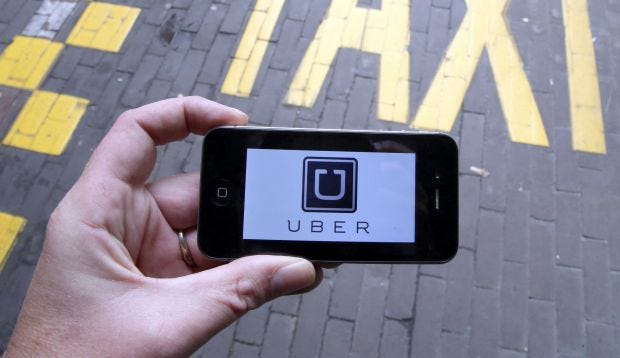
The resignation of Travis Kalanick as Uber’s CEO in June was seen by many as a culmination of sorts. A series of negative reports had forced Uber to finally address its toxic culture in an attempt to rehabilitate its image and win back its customers. But the culture problem is only one of the issues the company is facing. The bigger problem is its unsustainable business model — which means Uber’s days are numbered, whether Kalanick is there or not.
Arianna Huffington, a member of the company’s board of directors, has promised that Kalanick’s resignation marks the beginning of a new Uber where “no brilliant jerks will be allowed” and where the company will take a more constructive rather than its previous combative approach. But is this really a credible plan?
A Backward Culture
It’s worth remembering that Kalanick was only forced out by investors because the amount of bad press had reached a point where no other move would placate them. It was revealed that Uber had developed a program to deceive authorities; Google had sued the company for using stolen documents to improve its self-driving vehicles; twenty employees were fired after an investigation into sexual harassment; and Kalanick himself was filmed arguing with an Uber driver. The toxic boys’ club that Kalanick symbolized was unbefitting a company valued at up to $70 billion — a number which took a hit after the successive scandals.
Whether the culture can really be changed simply because Kalanick is gone is up for debate. Huffington may be trying to put a positive spin on her new initiatives by giving them some friendlier names, but that doesn’t mean she’ll be successful. Reports suggest Kalanick is planning to pull a Steve Jobs — meaning, to return as CEO after a spell — and a petition circulated by Uber employees after his resignation suggests that some in the company would welcome him back with open arms.
Uber is an astonishingly unprofitable company.
However, while the fate of Kalanick and the culture he created at Uber may impact the company’s fortunes, such things will not cause its ultimate downfall.The real problem that Uber faces is not one of culture, but of economics. Its business model is fundamentally unsustainable, and despite continuing passenger growth, it has no clear path to profitability.
An Unsustainable Business Model
Uber presents itself as a cheap, convenient, and modern alternative to taking a taxi, which is fantastic from the consumer side. It would have its users believe that its labor model is what allows it to offer such cheap fares when compared to taxis, but that isn’t the reality. The advantages customers get from using the rail-hailing service are a result of massive losses funded by venture capitalist (V.C.) money, and the huge burden it places on its drivers.
Uber is an astonishingly unprofitable company. In 2016, it lost $2.8 billion, and its losses haven’t slowed in 2017. In the first quarter, it lost an additional $708 million. It’s not uncommon for tech companies to operate at a loss in their early days. Amazon did the same, and was able to take advantage of the savings that came with running at a large scale to turn a profit. However, what worked for an e-commerce giant won’t necessarily work for a transportation company like Uber.
In an multi-part analysis of Uber’s economics, transportation expert Hubert Horan estimated that passengers paid only 41% of the actual cost of their trips — the rest being subsidized with venture capital. Further, and unlike Amazon, Uber cannot significantly improve its margins with scale because “drivers, vehicles and fuel account for 85% of urban car service costs.”
The only costs that Uber could conceivable cut is from their drivers, but they’re already struggling on the meager pay they receive, which has been consistently cut over the past several years. The company’s push to get more people using UberPool is making it even worse. Likewise, Uber has huge problems with driver turnover — which cost them in the long run, as new drivers need to be constantly recruited and trained.
Uber isn’t being generous in subsidizing its fares. It’s seeking to gain a dominant market position by doing severe damage to its competition before being forced to raise the cost of a trip.
Even automating the cars to remove drivers altogether would be unlikely to reduce costs enough to get Uber into the black, and leaked data shows that its self-driving vehicle tests haven’t been going particularly well. And that’s before any potential setback from the Google lawsuit.
Uber’s Downfall Won’t Be Pretty
An argument could be made that people should take advantage of cheap Uber fares while they last to get some benefit from that V.C. money for themselves. But that argument ignores Uber’s broader negative impacts on its drivers, on public transport systems, and on the fabric of our cities. Uber isn’t being generous in subsidizing its fares. It’s seeking to gain a dominant market position by doing severe damage to its competition before being forced to raise the cost of a trip.
If anything, Kalanick’s resignation shows that investors are becoming increasingly uncertain about Uber’s future. They wouldn’t have intervened to oust Kalanick if everything was going well. Perhaps they are starting to wonder when they’ll get their money back. Self-driving cars won’t rescue the company, and while taxis and public transit are feeling the impacts, they’re far from being in peril.
While Uber is trying to restore its image by reworking its internal culture, the real problems are its huge losses and lack of a path to profitability.Uber’s low cost is its real point of differentiation, yet eventually it will have no other choice but to raise prices, and at that point many of its customers will simply go back to their old pre-Uber ways, and Uber’s days — at least as a ride-hailing service — will be over.







